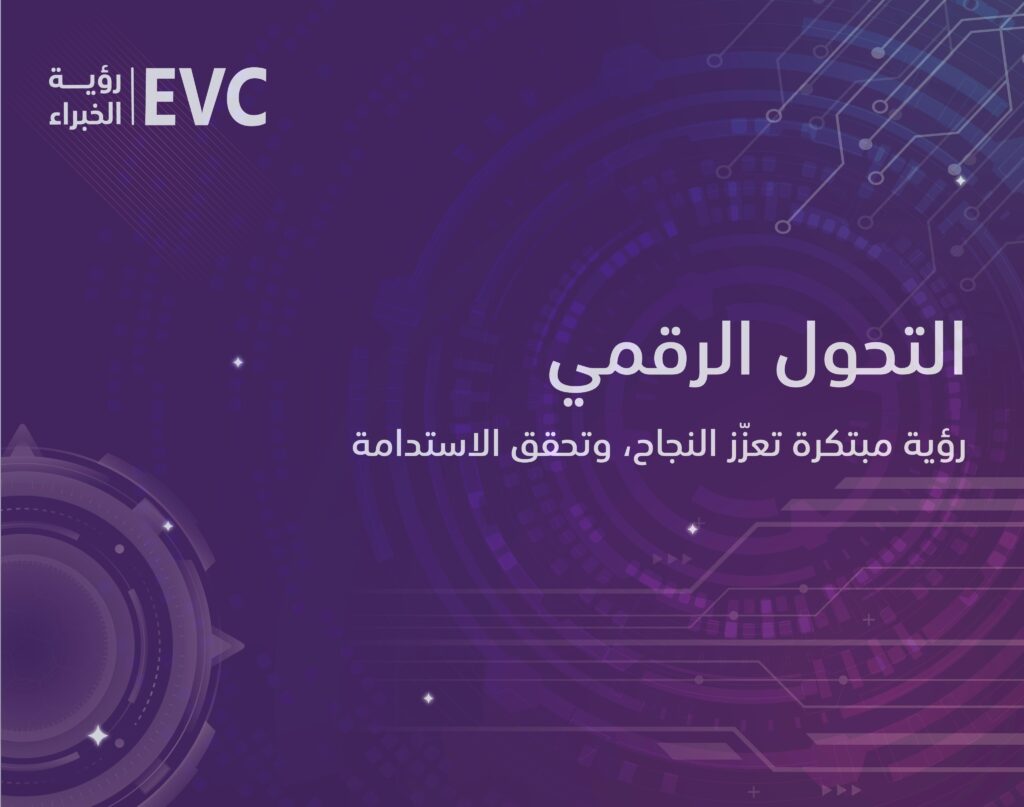
Government Digital Transformation Measurement 2025
- Introduction: Why is the “2025 Measurement” a Strategic Priority?
- Objectives of the Measurement 2025 : From Planning to Excellence
- Methodology Structure: 3 Tiers to Ensure Quality
- Key Updates in the 2025 Edition vs. Previous Versions
- How Can Government Entities Prepare for Compliance?
- Challenges and Opportunities in Implementing 2025 Standards
- Role of “Experts vision Consulting (EVC)” in Supporting Government Entities
Introduction: Why is the “2025 Measurement” a Strategic Priority?
As Saudi Arabia accelerates its journey toward digital transformation, the 2025 Government Digital Transformation Measurement has emerged as a pivotal tool to assess government entities’ progress in achieving Vision 2030 goals. This framework serves as a standardized benchmark to diagnose organizational readiness, identify performance gaps, and enhance service efficiency through smart technologies and exceptional user experiences.
Objectives of the Measurement 2025 : From Planning to Excellence
- Comprehensive Digital Empowerment: Ensure all entities adhere to core digital transformation standards.
- Enhanced User Experience: Deliver seamless, integrated digital services.
- Global Competitiveness: Improve Saudi Arabia’s ranking in international indices (e.g., UN E-Government Development Index).
- Operational Sustainability: Adopt cloud solutions and AI to reduce costs.
- Continuous Innovation: Encourage entities to launch cutting-edge digital services.
Methodology Structure: 3 Tiers to Ensure Quality
The 2025 methodology adopts a hierarchical structure:
| Level | Description | Details |
|---|---|---|
| Perspectives (10) | High-level strategic directions. | Examples: Strategy, Innovation, Data Governance. |
| Pillars (23) | Specific operational domains. | Examples: Digital Governance, Cloud Infrastructure, User Experience. |
| Standards (95) | Measurable and actionable indicators. | Examples: Standard for services via “Tawakkalna” app. |
Key Updates in the 2025 Edition vs. Previous Versions
- Major Additions:
- Platform Unification Standard: Reduce fragmentation and enhance security.
- Services via “Tawakkalna”: Strengthen integration with national platforms.
- Strategic Removals: 3 outdated standards (e.g., legacy shared systems standards).
- 36 Updated Standards: Revisions to “Cloud Computing” and “Digital Risk Management.”
How Can Government Entities Prepare for Compliance?
- Current State Assessment: Analyze gaps between existing practices and new standards.
- Cloud Adoption: A critical step for infrastructure compliance.
- Workforce Training: Build teams capable of driving digital innovation.
- User-Centric Design: Create integrated digital journeys (e.g., license renewal via a single platform).
Challenges and Opportunities in Implementing 2025 Standards
- Challenges:
- Cultural resistance to change within entities.
- Complexity of integrating legacy systems with modern technologies.
- Opportunities:
- Reduce operational costs by up to 40% through automation.
- Improve user satisfaction by 60% (based on local case studies).
Role of “Experts vision Consulting (EVC)” in Supporting Government Entities
Experts vision Consulting (EVC) is a strategic partner for entities aiming to excel in the 2025 Measurement, offering:
- Tailored Consultations: Gap analysis and customized action plans.
- Infrastructure Development: Cloud solutions and smart automation.
- Capacity Building: Workshops on digital standards and best practices.
- Innovation Support: Adoption of technologies like blockchain and AI.
Conclusion: The Path to a Smart Digital Government
The 2025 Measurement marks a qualitative leap in Saudi Arabia’s digital transformation journey, reflecting the Kingdom’s commitment to building a globally competitive digital government. By adopting these standards, entities can not only achieve compliance but also redefine citizen and resident experiences through next-generation digital services.
(Discover how Experts vision Consulting (EVC) can support your digital transformation efforts. Contact our team today.)